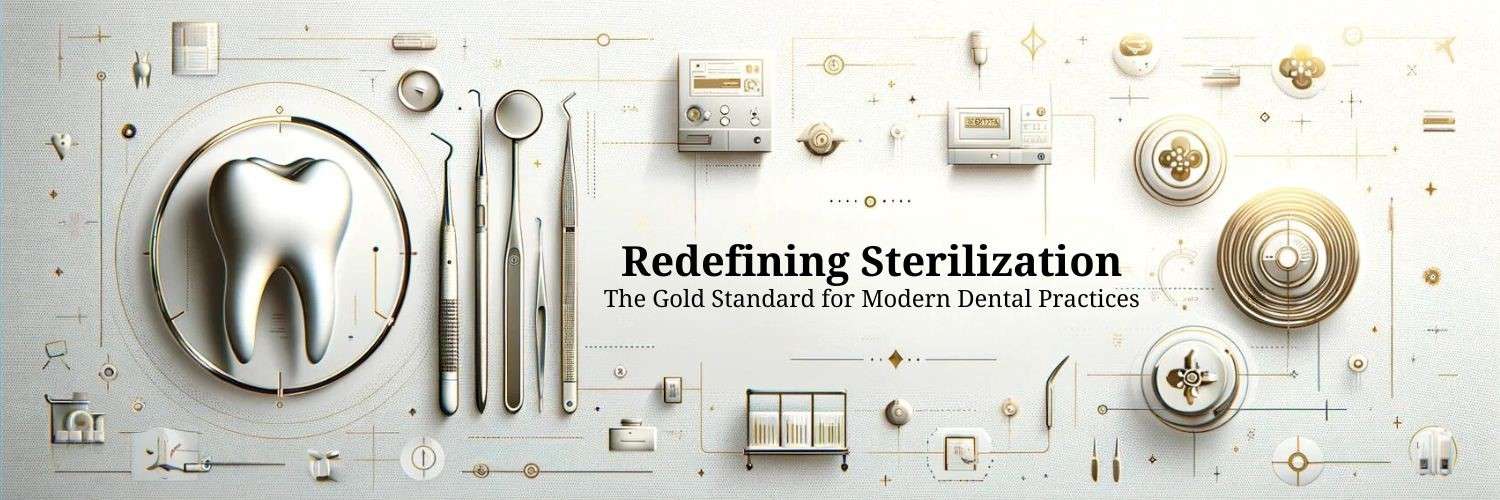Autoclave Working Mechanism In Dentistry
A dental practice must have a reliable and efficient infection control guide in order to keep patients safe. The proper precautions must be taken by the dental professionals to guarantee that all the reusable dental instruments are thoroughly cleaned before the sterilization process, also the procedure is carried out in a secure manner to prevent any spread of infections.
The most widely used and most successful sterilisation method is moist heat, which leads to the formation of condensed steam under pressure. Steam sterilization in dentistry is highly penetrating as compared to dry heat sterilization, also it is more cost-efficient in dentistry.
For effective sterilization it is required to destroy all harmful microorganisms including bacterial spores, viruses, fungi, etc.; the reusable dental instruments need to remain exposed to a specific temperature under pressure, for a specific holding time, which is possible in an autoclave.
Mechanism of Steam Sterilization :

The fundamental concept of a steam sterilizer is to expose all the instruments which need to be sterilized to highly pressurized steam, at the appropriate temperature and for a specific time period. Hence steam sterilization depends on 4 basic factors – Temperature, Pressure, Time and Steam.
The duration of the sterilization cycle differs depending upon the type of dental autoclave.
Types of Steam Sterilizers:
There are basically 2 types of dental steam sterilizers used in the dental industry.
Gnatus – N Class Autoclave

Among autoclaves the Gnatus Bioclave 21L is a tried and tested N Class Autoclave, it is a small and economical dental autoclave. It is used for sterilization of solid and bare dental instruments e.g. mouth mirror, probe, explorer, tweezer, forceps, etc.
It works by the mechanism of “Gravity displacement”. Moist heat rushes from the sides of the sterilizing chamber thus pushing the air out of the chamber & effectively sterilizing all the instruments. The advanced Gnatus Bioclave 21L autoclave with its unique design and improved safety features provides outstanding functionality and ease of use to the dentist.
Runyes B class Autoclave:

Among B class autoclaves Runyes Feng 23L autoclave is the most advanced type of autoclave with a triple vacuum cycle. This is known as the “Best” in its class and complies with all the European standards of infection control for daily dental practices. The B class dental autoclave can be utilized for sterilization of all types of dental instruments and equipment including solid/hollow, porous/non-porous, wrapped or unwrapped etc.
The first vacuum cycle starts before the sterilization process to remove the trapped air from the hollow dental equipment, another vacuum cycle starts after sterilization to remove the moist air from the chamber and the last vacuum cycle occurs after the dry cycle to ensure a 100% sterilized dental instruments.
For effective destruction of prion bacteria, B class autoclaves also come with a Prion Cycle or B+ Cycle. Runyes Feng 23L B class autoclave is the highest-selling autoclave in India due to its efficiency and B+ cycle advanced technology which is useful for sterilizing surgical instruments e.g. implant kits. Its tracking facility to store sterilization cycles through USB function makes it more reliable and unique.
Factors To Consider While Purchasing A Dental Autoclave For The Dental Clinic:
Capacity

Depending on the practice and size of the dental clinic, the dental professional must select an autoclave that can quickly sanitise all of the clinic’s used dental instruments at the same time while keeping the patients and assistants safe.
Reduced Full Cycle Time:
The dental professional’s productivity increases as the full sterilising cycle is completed faster. The entire cycle duration is decreased, in the Runyes Feng 23L B class autoclave, which does not obstruct the admittance of next patients, and equipment can be sterilised on a continual basis for better patient safety.

Design:
The dental autoclave should be small enough to fit in the dental clinic’s sterilisation space. It shouldn’t take up a lot of room at the dental office.

Data Accessibility:
Sterilization data can be recorded and accessed quickly to ensure that safety criteria are met. As in Runyes Feng 23L autoclave, the data accessibility feature is available along with the option for printer.

Effectiveness of the Sterilization:
The autoclave now has the ability to evaluate temperature penetration using the “B&D Test” as well as a steam generator cleaning programme to improve the sterilising cycle’s performance. It largely eliminates the requirement for servicing calls, giving the dentist peace of mind.
Conclusion
It is important for dental healthcare professionals to know how an autoclave works and which type of autoclave he/she should use so that they can provide a safe environment for patients as well as staff.
You Can Also Buy The Best Dental Autoclave at an Affordable Price from our Online Store.





Leave a comment